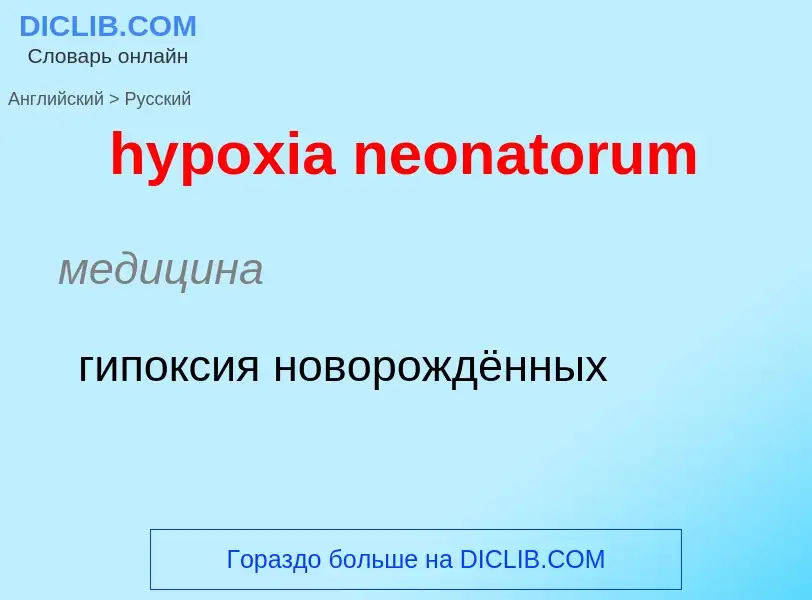Traducción y análisis de palabras por inteligencia artificial ChatGPT
En esta página puede obtener un análisis detallado de una palabra o frase, producido utilizando la mejor tecnología de inteligencia artificial hasta la fecha:
- cómo se usa la palabra
- frecuencia de uso
- se utiliza con más frecuencia en el habla oral o escrita
- opciones de traducción
- ejemplos de uso (varias frases con traducción)
- etimología
hypoxia neonatorum - traducción al ruso
медицина
гипоксия новорождённых
медицина
асфиксия новорождённого
послеродовая асфиксия
медицина
асфиксия плода при рождении (в 1-ю минуту после рождения)
Definición
Wikipedia
Perinatal asphyxia (also known as neonatal asphyxia or birth asphyxia) is the medical condition resulting from deprivation of oxygen to a newborn infant that lasts long enough during the birth process to cause physical harm, usually to the brain. It is also the inability to establish and sustain adequate or spontaneous respiration upon delivery of the newborn. It remains a serious condition which causes significant mortality and morbidity. It is an emergency condition and requires adequate and quick resuscitation measures. Perinatal asphyxia is also an oxygen deficit from the 28th week of gestation to the first seven days following delivery. It is also an insult to the fetus or newborn due to lack of oxygen or lack of perfusion to various organs and may be associated with a lack of ventilation. In accordance with WHO, perinatal asphyxia is characterised by: profound metabolic acidosis, with a pH less than 7.20 on umbilical cord arterial blood sample, persistence of an APGAR score of 3 at the 5th minute, clinical neurologic sequelae in the immediate neonatal period, or evidence of multiorgan system dysfunction in the immediate neonatal period. Hypoxic damage can occur to most of the infant's organs (heart, lungs, liver, gut, kidneys), but brain damage is of most concern and perhaps the least likely to quickly or completely heal. In more pronounced cases, an infant will survive, but with damage to the brain manifested as either mental, such as developmental delay or intellectual disability, or physical, such as spasticity.
It results most commonly from antepartum causes like a drop in maternal blood pressure or some other substantial interference with blood flow to the infant's brain during delivery. This can occur due to inadequate circulation or perfusion, impaired respiratory effort, or inadequate ventilation. Perinatal asphyxia happens in 2 to 10 per 1000 newborns that are born at term, and more for those that are born prematurely. WHO estimates that 4 million neonatal deaths occur yearly due to birth asphyxia, representing 38% of deaths of children under 5 years of age.
Perinatal asphyxia can be the cause of hypoxic ischemic encephalopathy or intraventricular hemorrhage, especially in preterm births. An infant with severe perinatal asphyxia usually has poor color (cyanosis), perfusion, responsiveness, muscle tone, and respiratory effort, as reflected in a low 5 minute Apgar score. Extreme degrees of asphyxia can cause cardiac arrest and death. If resuscitation is successful, the infant is usually transferred to a neonatal intensive care unit.
There has long been a scientific debate over whether newborn infants with asphyxia should be resuscitated with 100% oxygen or normal air. It has been demonstrated that high concentrations of oxygen lead to generation of oxygen free radicals, which have a role in reperfusion injury after asphyxia. Research by Ola Didrik Saugstad and others led to new international guidelines on newborn resuscitation in 2010, recommending the use of normal air instead of 100% oxygen.
There is considerable controversy over the diagnosis of birth asphyxia due to medicolegal reasons. Because of its lack of precision, the term is eschewed in modern obstetrics.

